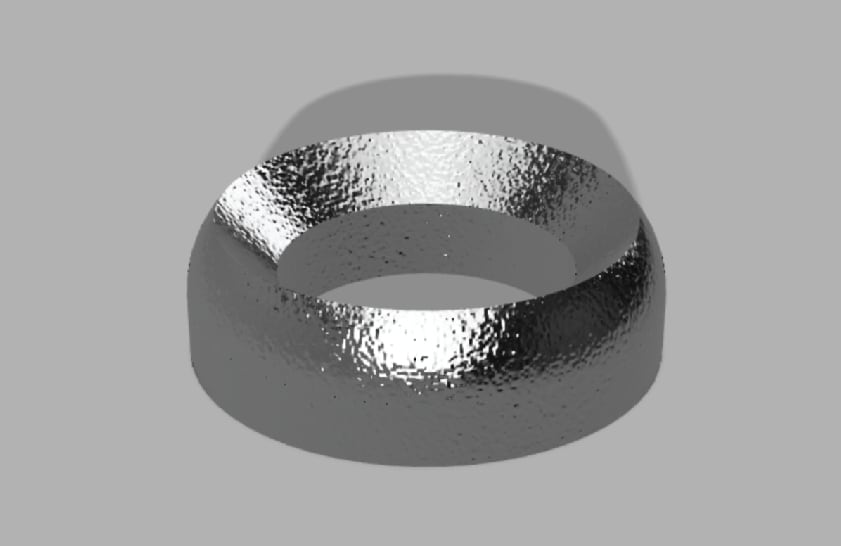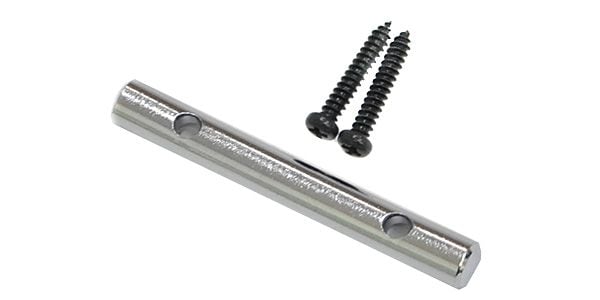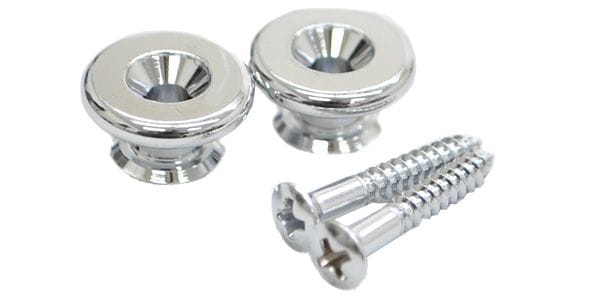Hello, this is Cheena. This time, I will introduce modifications that can be used for basses on a whole.
Have you guys ever modified your bass?
Basses have fewer parts and a smaller selection of parts than guitars, but there are various modifications that can be made with a little ingenuity and the use of some guitar parts.
For example, a bar retainer.
SCUD / SR-GB475C
This retainer is generally used for guitars equipped with a Floyd Rose tremolo, but mounted on a bass, it shows a certain "advantages" as it is more effective than a normal bass retainer.
One advantage is that the tension can be controlled by adjusting the height of the retainer.
Not only for the bass, but also for all dish-shaped and seagull-shaped retainers, the height is fixed with spacers, so the tension cannot be easily adjusted.
However, with a bar retainer, it’s possible to adjust the height of the retainer by tightening the screws without requiring a spacer.
This also has the advantage of eliminating the need to adjust the bridge string height to make the sound tighter, and allowing the string height to be adjusted purely for ease of play.
The other advantage is that you can suppress the resonance of the A string at the head, which is a common symptom of the Jazz Bass. Whereas a typical retainer is installed on the D and G strings, the bar retainer is installed so that it holds all of the strings.
This will reduce string resonance between the pegs and nuts.
Replacing the strap pin is also recommended.
GOTOH / EP-B3 Chrome
There are several types of non-locking pin shapes, roughly divided into "conical" and "dish".
The conical type is the so-called "ordinary strap pin" and can be purchased at a very low price (starting from 50 yen per piece). The dish-shaped strap pin makes it harder to remove the strap than the conical shape, and the strap will not come off when a rubber strap stopper is installed.
Another feature is that it is inexpensive.
I also recommend using two endpins for musical instruments with a symmetrical body end, such as the Precision Bass. This allows the instrument to be leaned anywhere, making it easy to put it down while composing or practicing.
There is also the rosette washer.

It's like a washer for a neck joint screws, but it will fit the head of a countersunk screw neatly. There are people who occasionally use this in the self-made musical instrument world.
I introduced 3 parts and how to use them. Each part is cheap, very easy to install, yet highly effective, but not well known.
How about trying these when you aim for a new string height during your next string replacement?
Let's have a good musical instrument life!




























